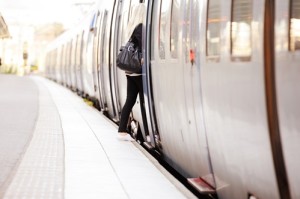Mesh makes public transit more secure
Aug 10, 2015
 In the transportation industry, it’s important to have an eye in the sky as far as security is concerned. Every day on public transport, it helps for safety officials to be able to see what’s going on so that they can react accordingly if an event were to occur. The growing number of security issues that have occurred on public transit demonstrate a need for increased security and video surveillance across the board.
In the transportation industry, it’s important to have an eye in the sky as far as security is concerned. Every day on public transport, it helps for safety officials to be able to see what’s going on so that they can react accordingly if an event were to occur. The growing number of security issues that have occurred on public transit demonstrate a need for increased security and video surveillance across the board.
Why do we need better security on public transportation?
According to Security Today contributor Rodell Notbohm, the prevalence of terrorist attacks has led to higher demand for better surveillance systems so that teams can more quickly and effectively respond to these types of emergencies. Notbohm wrote that the American Public Transportation Association estimated that a $6.4 billion investment is needed in order to secure the country’s transportation systems, but budgetary restrictions are holding many organizations back from implementing full video coverage of the nation’s public transit.
However, despite these kinds of setbacks, video surveillance is increasingly being utilized as a way to prevent security incidents and keep track of important assets within the transportation industry.
“Mobile video surveillance systems are being installed in transit agencies across the country,” Notbohm wrote. “These systems have capabilities beyond standard, off-the-shelf solutions. On bus, rail and paratransit vehicles, light sensitive cameras, digital video recorders and management software programs are being installed to monitor what operators cannot directly observe while driving a bus or operating these vehicles. ”
With the help of video surveillance, incidents like injuries and altercations – and maybe even the makings of terrorist attacks like the bombings that took place in Madrid and London in 2004 and 2005, respectively – can be seen and taken care of. But how can these video networks provide reliable information in the event of a disruption? What if the network were to go down? These are both valid questions that network operators have to address before they implement video solutions within their transit systems.
The strength of mesh
The answer to the questions above: mesh networks. These systems are stronger than traditional networks in that they are self-healing, meaning they continue to provide reliable connection even if one point in the network were to experience an outage. Because every point in the network can connect to every other point, if one goes down, the other connections can simply reroute automatically to a different point until that spot can be fixed manually.
This means that with wireless mesh infrastructure, public safety officials can reliably have connectivity anywhere they need it, making their security efforts stronger.
Mesh in South Korea
These kinds of networks can help keep citizens safe during emergencies. For instance, when the Seoul Metropolitan Rapid Transit Corporation needed to install a stronger video surveillance system after a subway fire killed 198 people, they turned to Firetide’s mesh technologies. Completed in 2010, the network is the world’s first real-time, high-bandwidth mobile wireless video surveillance subway system.
The Seoul solution allows train operators to have video of the subway system so that they can decide whether or not to enter a station – and if the environment is safe. The wireless nature of the mesh network allows for better signal, especially because an underground train system isn’t conducive to mobile connectivity. SMRT deployed 1,000 Firetide mesh nodes and 350 cameras along the four affected subway lines in order to help prevent incidents like the fire that started their search for better security.
Contact Firetide today to see how our AutoMesh can help keep commuters safe and your assets monitored at all times.

